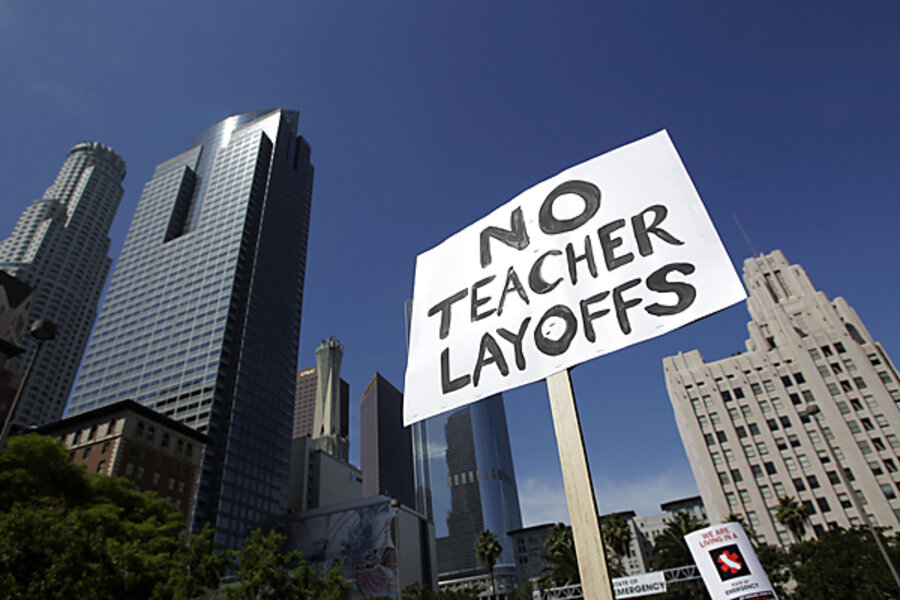Surprise! Tax revenues up, but should we celebrate?
Loading...
As I noted a couple of weeks ago, California’s April income tax revenues were well above forecast levels. Many other states, especially those reliant on somewhat progressive income taxes have also reported higher than expected revenues. Goldman Sachs reports first quarter state revenues were up 9 percent year over year with April alone up 12 percent. Last week, Governor Brown’s May Revise (the update to his January budget) anticipated an additional $3.5 billion in revenues for the current fiscal year, and a combined two-year gain of $6.6 billion. Coupled with budget actions adopted in March (about $13 billion) this brings California’s budget closer to balance from an estimated $25 billion in the red to a $9.6 billion budget gap. So what’s happening here?
Before we pop the champagne, let’s look at both where the money is coming from and what that source means to the budget process. Federal and state personal income tax revenues are up nationwide even though in some places corporate taxes are down. The revenue gain may reflect stronger ongoing economic activity, but it could also represent a one-time revenue boost due to taxpayer actions. I already blogged about potential revenue gains from IRA conversions. Conversations with others over the last week have suggested other possible explanations. Although the two-year extension of the Bush tax cuts kept capital gains tax rates low, that didn’t happen until mid-December. I’m guessing at least some high-wealth households decided to realize some capital gains to lock in the 2010 rates and avoid the uncertainty of potentially higher future rates. After all, it was pretty clear that tax rates on long term capital gains wouldn’t go down come 2011 and investment advisors seemed to think that realizing gains was worth considering. In 1986 when taxpayers knew for certain that tax rates were increasing in the following year, realizations spiked to 7 percent of GDP before falling back down in 1987. Thus, uncertainty in federal tax policy may have led to a boom in this year’s revenues that might not last.
Why does this matter? For starters, states still need to deal with ongoing structural deficits. If states think the higher revenues will be permanent, they may postpone hard decisions. As Billy Hamilton (a former deputy state controller in Texas) said in a recent Pew Center for the States and the Rockefeller Institute report, “One of the rules of revenue estimating is ‘It’s the turns that kill you’”.
California’s Department of Finance estimates that while the state’s economic growth will be weaker than the nation as a whole in 2010 and 2011, it will then outpace the rest of the country in 2012 and 2013—the May Revise predicts a 5.9 percent average year-over-year growth rate for state revenues through 2015.
This medium-term forecast reflects an assumption that much of the gain in personal income tax revenues has come mainly from wage growth for higher-income residents in 2010. In contrast, the Legislative Analyst’s Office(LAO) forecasts almost identical revenues for 2010-2011 and 2011-2012, but assumes that a much higher share of personal income growth this year came from capital gains ($65 billion vs. $46 billion) and thus predicts lower revenue growth in future years. For example, the difference in forecast assumptions translates into 2014-2015 major taxes ( personal income tax, sales and use tax and corporate tax) being $3 billion higher in the governor’s estimate than the legislature’s ($107 vs. $104 billion). While $3 billion dollars may seem like rounding error for California’s huge budget – even “small” numbers accumulate over time.
The difference in assumptions also illustrates a fundamental flaw in California’s revenue system–its volatility. As the governor and others think about possible tax reforms to bring to voters, they might want to think about ways to tame the roller coaster of California revenues. I suggest they consider setting up a special fund for capital gains and dividend revenues (or those from all schedule D income) and remit the money into the general fund based on their 3-year or 5-year averages. California (and other states) will benefit from the current windfall, but future revenues and expenditures would then be more immune to the next boom and bust cycle.
For now, I hope states will view the April revenue surprise as another temporary benefit from federal policy and not an indication that revenue growth rates have returned to pre-recession levels. With stimulus funds ending this year, the boost in income tax revenues is most welcome, though the added money doesn’t end the need for longer term reform.
Add/view comments on this post.
--------------------------
The Christian Science Monitor has assembled a diverse group of the best economy-related bloggers out there. Our guest bloggers are not employed or directed by the Monitor and the views expressed are the bloggers' own, as is responsibility for the content of their blogs. To contact us about a blogger, click here. To add or view a comment on a guest blog, please go to the blogger's own site by clicking on the link above.





